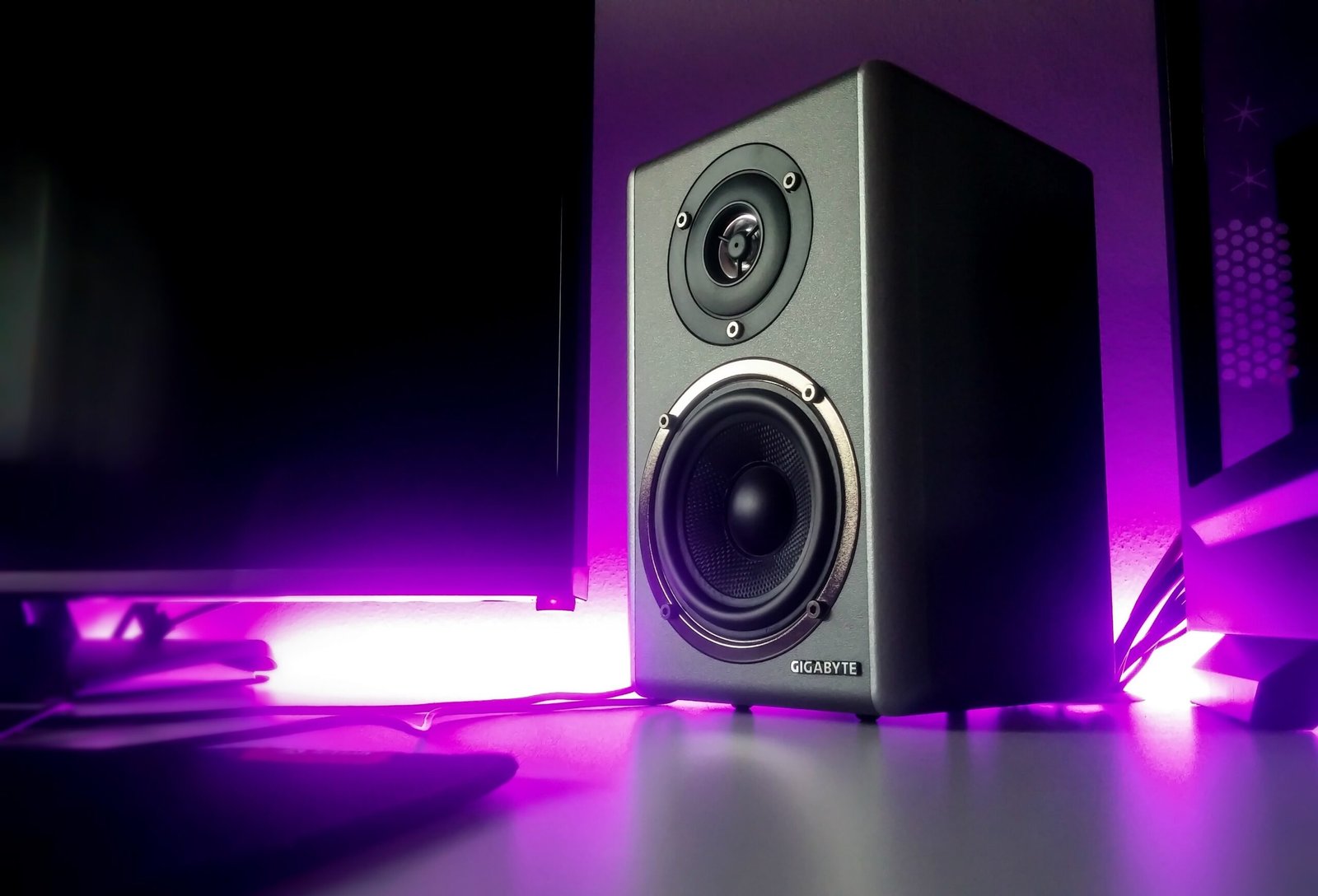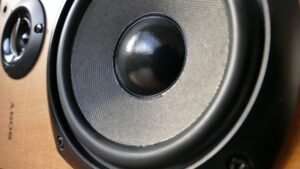The Difference Between Passive, Active, and Powerful Loudspeakers: A Guide to Selling Talk

The Difference Between Passive, Active, and Powerful Loudspeakers: A Guide to Selling Talk

In this guide, we will look at the differences between passive, passive, and active speakers. I will first explain the difference in simple terms. Next, we’ll dive into the details. So what’s the difference between passive, active, and dominant speakers?
The difference between passive, active and dominant loudspeakers
You need a separate amplifier to drive the passive speakers, while the active and powered speakers have the subwoofer built into the cabinet, but for the powered subwoofer there is only one amplifier that drives it. pilot. All tweeters (downstream and upstream) were active. The speakers have a dedicated amplifier for each speaker.
The speakers have no built-in amplifier and must be amplified with an external amplifier or AV receiver, the crossover is passive and is placed between the two sides of the speakers connecting the external subwoofer and the speakers.
Power amplifiers have a built-in amplifier that does not require an external amplifier or AV receiver, and the crossover is passive and placed after the built-in amplifier.
Active speakers have multiple built-in subwoofers (usually one per speaker) and do not require an external amplifier or AV receiver, the crossover is active and placed in front of the subwoofers.
Headphone prices range from under $50 to over $50,000. They cover a full spectrum from very cheap entry-level cell phones to very expensive high-end cell phones, and when it comes to cell phones and assets, they basically divide the market into two segments based on price . .
You can find the first loudspeaker for as low as around $1000, active loudspeakers are generally more expensive than powered loudspeakers and are usually found in the professional and luxury loudspeaker market segments, and often cost over $1,000.
What is crossover?
A crossover plays a major role in clarifying the difference between passive, active and powered speakers, it is a filter that divides the musical signal so that the high frequencies go to the tweeter and the low frequencies go to the mid/range. bass that speaks in both basses.
A three-track loudspeaker divides the musical signal into three frequency ranges: treble, midrange and bass.
Passive Crossover : Found in a powerful passive speaker that splits the audio signal after amplification. Passive junctions consist of resistors, capacitors, and inductors that are rated at high power levels. There are no active components such as transistors or op-amps that require power.
Active Crossover : Found in active speakers and splits the audio signal before amplification, and processes the audio signal at LINE level (before amplification) so the components do not need to be separated at high power, they use active parts as op. -amps and transistors that require a power source to operate .
Advantages and disadvantages of passive and active exchanges
The main advantages of unconventional exchange are that it provides a low cost system that does not need to be connected to the power supply. On the other hand, it offers engineers little flexibility, since it is frequency and impedance specific. So there are often big compromises when designing passive loudspeakers.
The main advantage of the active crossover is that it allows the speaker to be configured with a dedicated subwoofer, where the subwoofers are directly connected to the tweeters without any unusual crossovers between them.
As such, each amplifier can be tuned to best match the amplifier characteristics of which it is capable. It allows designers to precisely control the operation of each speaker with minimal compromise, resulting in better sound quality.
Another great advantage is that the amplifier can be designed with very low output power as there will be no loss in the junction, but its main disadvantage is the overhead as there will be an amplifier for each loudspeaker .
The difference between passive, active and dominant speakers (which is better)
When you try to know the difference between passive, active and active speakers in terms of advantages and disadvantages, you will find that it is difficult to give a single answer. , and needs. That being said, there are pros and cons to each type that I think we can all agree on.
Advantages and disadvantages of passive hearing aids
Perhaps the two biggest benefits of passive speakers are that there are so many types to choose from for every budget, and you’ll have complete flexibility to match your favorite speaker, subwoofer, or receiver.
If you’re an audiophile and passionate about high-resolution audio, you’ll have a huge selection of high-quality passive speakers to choose from, whether you choose powered or active speakers. .

On the other hand, passive speakers do not offer as simple and easy a configuration as active ones. You will need a separate amplifier and usually a traditional “stereo stand” that supports the amplifier. It will therefore require more space and there will be more cables than amplified and active speakers.
Also, since you’ll have to purchase the speakers and amplifier separately, the initial cost will often be higher with passive speakers than with powered speakers. If your budget is tight, powered speakers can give you better value for money than passive speakers with a separate amplifier/carrier.
Advantages and disadvantages of powerful speakers
The main advantage of powerful speakers is that they require less space because there will be less equipment to place. Additionally, since the speakers and subwoofer share the same enclosure, power speakers are an efficient solution that offer excellent value for money.
Since the speakers are usually reasonably sized and have a built-in amplifier, the actual space required is small. Powerful speakers can usually be placed on a desk or bookshelf if space is limited, there is no need for a separate amplifier to take up extra space.
When it comes to speakers, one obvious downside is that you can’t mix and match speakers and subwoofers. If you want something new, you have to change the whole system, you can’t upgrade the amplifier or just the speakers .
Another downside is that there are often fewer inputs in powered speakers than in built-in or stereo AV amplifiers, which means fewer options for connecting to different music (equipment) sources (analogue and digital). ).
The last issue worth mentioning is that power speakers are geared towards the mainstream market (people on a normal budget), so if you have a big budget and are looking for a high-end stereo, power speakers will not be the best choice. . You.
Advantages and disadvantages of active speakers
Active speakers have many of the same benefits as powered speakers. It is compact, easy to install and does not require a special amplifier.
The main difference between them is that active speakers use advanced technology, are well made, are more expensive, and active speakers often come with connectivity options (wired and wireless). look at the power speakers.
The fact that dynamic loudspeakers use only one amplifier at a time allows engineers to design very good loudspeakers, but it requires engineers to have experience in loudspeaker design and of sound. both the big and the budget to design very high quality amplifiers and loudspeakers. .
Dynamic speakers are an all-in-one integrated option for audiophiles and studio professionals who want high-end headphones.
Difference between passive, active and powered speakers (wireless speakers)
The active and powered speakers allow wireless functionality, but not the amplifier, as it does not have a built-in amplifier. In recent years, almost all active and powerful speakers come with wireless capabilities (either by default or as an additional option).
The wireless headphones connect wirelessly to a compatible music source without the need for cables. If you have a device with Bluetooth, you can stream music wirelessly. However, there are two different wireless protocols that are widely used in wireless headsets (Bluetooth and WiFi).
Bluetooth comes with lower power and frequency coverage than Wi-Fi, and it compresses the music signal more than Wi-Fi, so the sound quality drops significantly when using Bluetooth. Also, the maximum Bluetooth range is about 30 feet.
Wi-Fi has a higher bandwidth than Bluetooth and does not compress music like Bluetooth does. Therefore, the sound quality will be better for it. In addition, the coverage range is excellent, up to 300 feet, and high quality streaming programs such as Apple Airplay , Sonos and Tidal are used.



